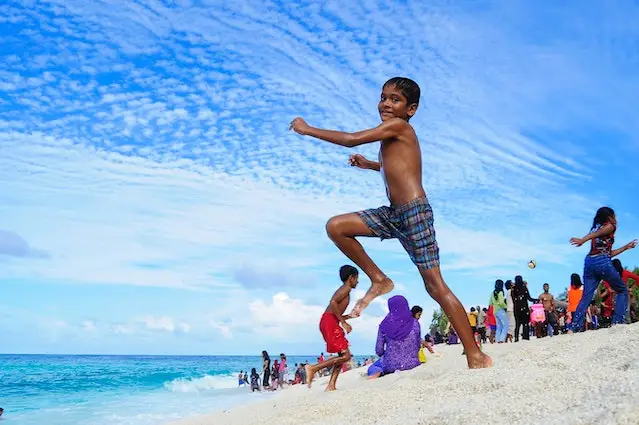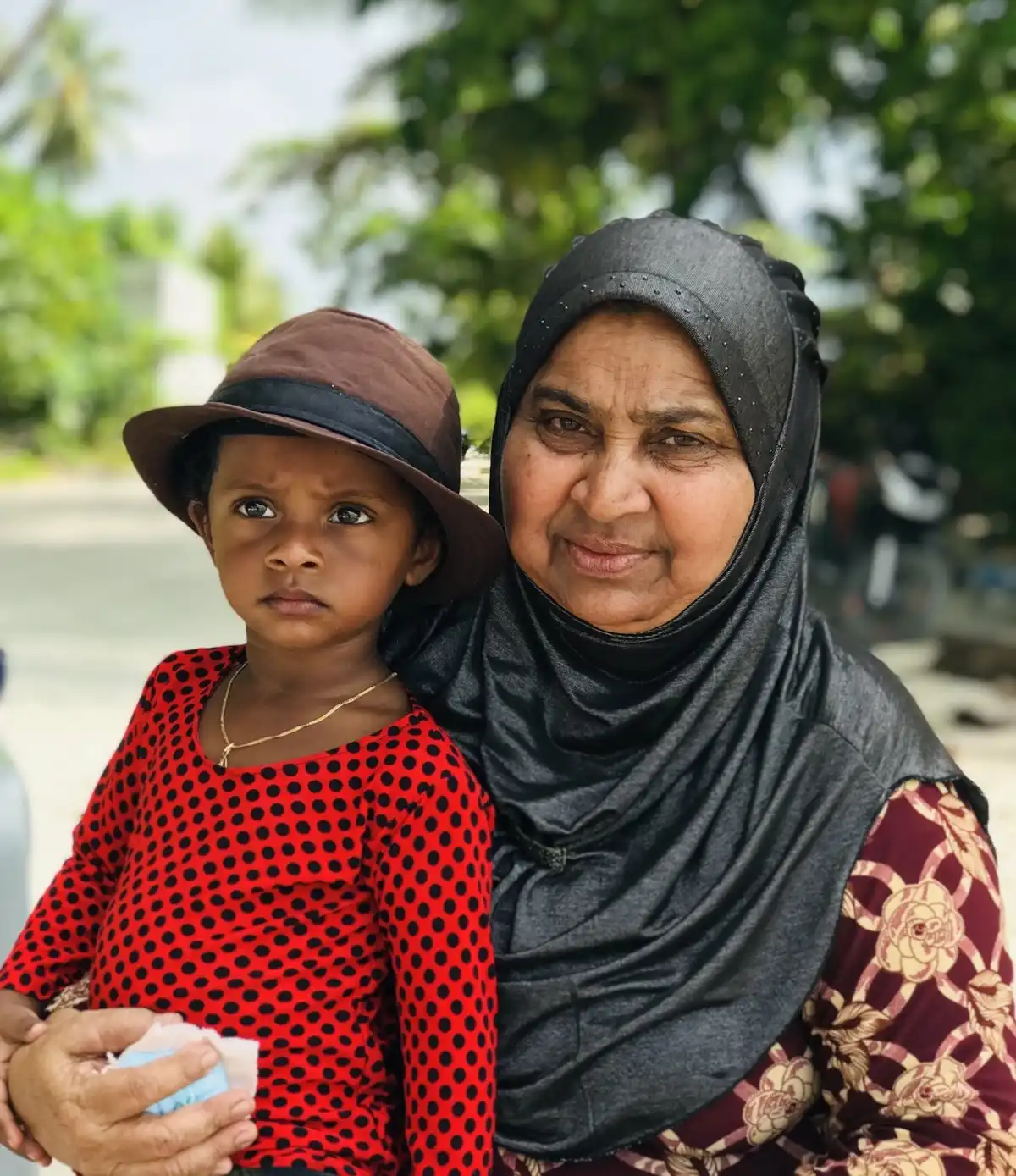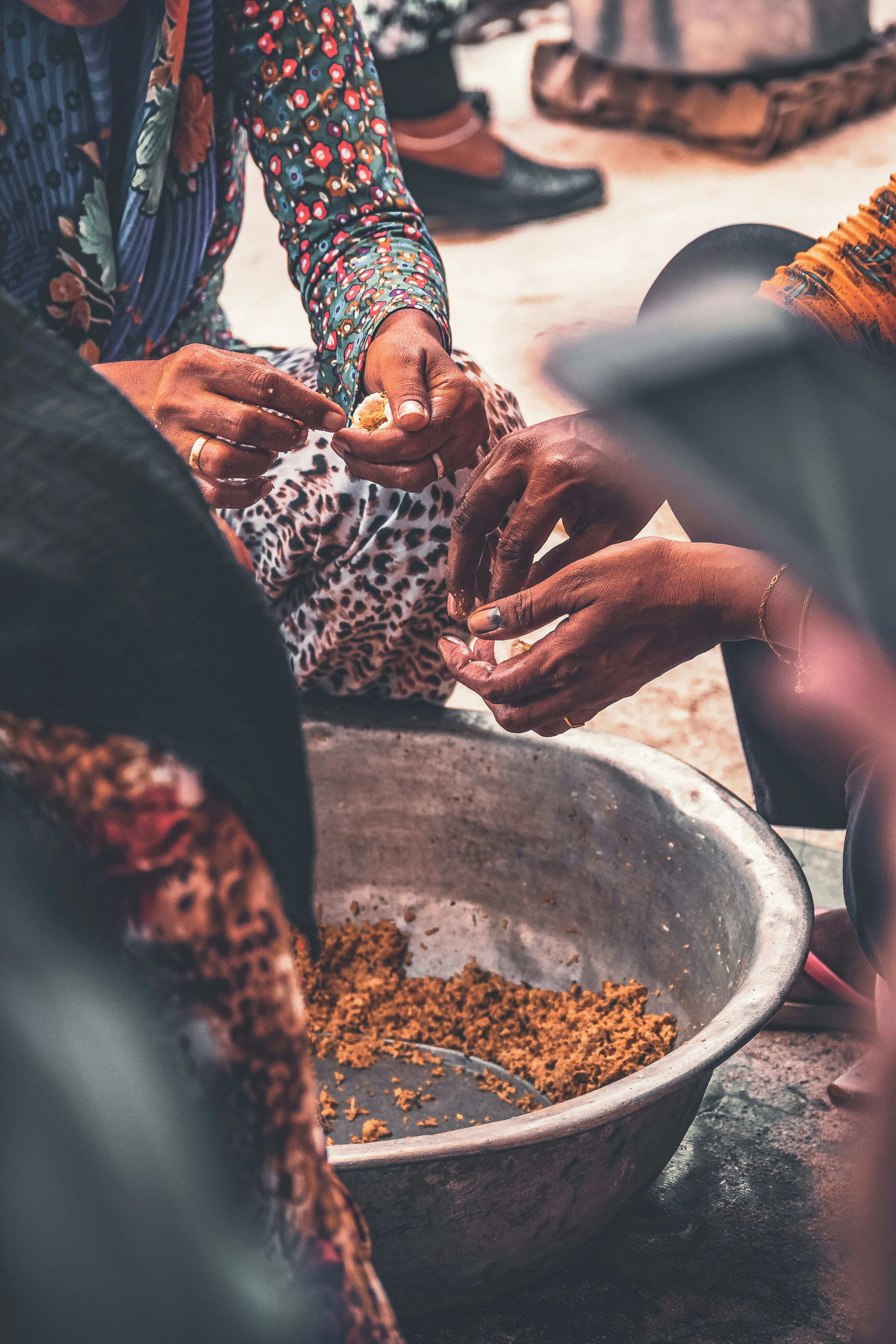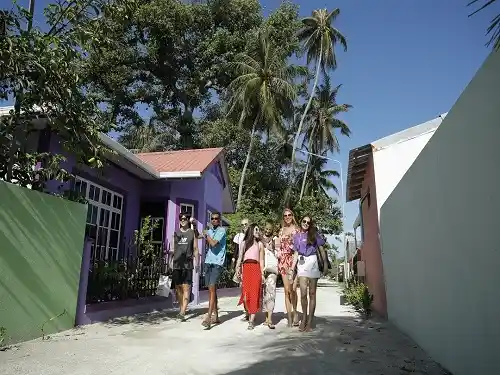Discover a historic island with ancient ruins, rich cultural heritage, and traditional community in the heart of Baa Atoll's UNESCO Biosphere Reserve
Located in the stunning Baa Atoll, Kendhoo Island offers visitors a unique journey through Maldivian history and culture. This historic island holds a special place in the nation's heritage, with ancient ruins and traditions that date back centuries, all preserved within the UNESCO Biosphere Reserve.
What makes Kendhoo special is its remarkable historical significance. The island is mentioned in ancient texts and was once an important center of learning and culture in the northern Maldives. Archaeological remains, including an ancient mosque with intricate coral stone carvings, provide tangible connections to the past. Kendhoo's community has preserved many traditional practices and oral histories that offer insights into pre-Islamic and early Islamic periods of Maldivian history.
Visitors to Kendhoo are drawn by its authentic atmosphere, historical sites, and the opportunity to experience a living connection to the Maldives' past. The island combines cultural exploration with natural beauty, offering access to pristine beaches, vibrant coral reefs, and the spectacular marine environments of the UNESCO Biosphere Reserve. For travelers interested in history, culture, and genuine community experiences beyond the typical resort experience, Kendhoo provides a fascinating window into the soul and story of the Maldives.
Kendhoo Island is situated in the western part of Baa Atoll, approximately 120 kilometers northwest of Male. The island occupies a strategic position within the UNESCO Biosphere Reserve, surrounded by crystal-clear waters and vibrant coral reefs.
Its location provides excellent access to some of the region's most pristine marine environments, including several marine protected areas and the world-famous Hanifaru Bay, known for its seasonal aggregations of manta rays and whale sharks. Kendhoo's position offers a convenient base for exploring the natural wonders of Baa Atoll while experiencing authentic island life and historical sites.
Kendhoo Island holds a special place in Maldivian history, with archaeological evidence and oral traditions suggesting it was an important center of culture, learning, and governance in pre-Islamic and early Islamic periods. The island's historical sites and preserved traditions offer visitors a unique window into the Maldives' past.

Kendhoo is home to one of the oldest mosques in the Maldives, featuring intricate coral stone carvings and traditional architecture. This historic structure provides insights into early Islamic influences and indigenous building techniques.

The island contains several archaeological sites, including ancient foundations, burial grounds, and artifacts that date back centuries. These remains are gradually being documented and studied to better understand the island's historical significance.

Kendhoo's community preserves oral histories, traditional practices, and cultural expressions that have been passed down through generations. Elders serve as keepers of knowledge about the island's past and its place in Maldivian history.

The island features in historical texts and narratives, including accounts by Arab travelers and early chronicles of the Maldives. These references highlight Kendhoo's importance as a center of learning and governance in earlier periods.
Kendhoo's historic mosque is a cultural treasure:
This remarkable structure represents one of the finest examples of traditional Maldivian Islamic architecture and craftsmanship.
Kendhoo's place in Maldivian history includes:
These historical connections make Kendhoo a living museum of Maldivian cultural heritage.
Kendhoo Island is renowned for its preservation of traditional Maldivian customs and cultural practices. The island community maintains many time-honored traditions that offer visitors authentic insights into Maldivian heritage.

Kendhoo is known for its skilled artisans who continue to practice traditional crafts. The island has a particular reputation for fine lacquerwork (liyelaa jehun), creating intricately decorated wooden items with vibrant colors derived from natural sources. This ancient craft involves applying layers of resin and natural pigments to wooden objects, then etching detailed designs. Coir rope making is another traditional craft, with coconut husks processed and twisted into strong, durable rope used for boat building and various household purposes. Some families also specialize in traditional mat weaving (thundu kunaa), creating intricate patterns from dried reeds.
Visitors can observe these crafts being made and sometimes participate in demonstrations arranged through guesthouses. Many artisans sell their creations directly to visitors, providing authentic souvenirs while supporting local traditions.

Traditional music and dance remain important cultural expressions on Kendhoo. Boduberu, the most popular form of traditional Maldivian music, features rhythmic drumming accompanied by dancing that gradually increases in tempo and intensity. The island also preserves some rarer forms of traditional performance, including bandiyaa jehun (pot drumming) where women create rhythms using household items. These performances often take place during community celebrations and special occasions. The island observes traditional festivals throughout the year, including Islamic holidays like Eid, which are celebrated with special meals, community gatherings, and cultural performances.
Visitors may have the opportunity to witness or even participate in these performances, especially if their stay coincides with local celebrations. Some guesthouses arrange cultural evenings where guests can experience these traditional art forms.

Kendhoo's cuisine reflects traditional Maldivian flavors with some unique local specialties. Fish is the staple protein, prepared in various ways including grilled, curried, or dried and smoked. Mas huni (a breakfast dish of shredded smoked tuna mixed with grated coconut, onion, and chili) is a daily staple. Garudhiya (clear fish broth) served with rice, lime, chili, and onions is another common dish. The island is known for particular recipes that have been preserved through generations, including special preparations for festivals and celebrations. Coconut features prominently in many preparations, from fresh coconut milk in curries to grated coconut in desserts and snacks.
Visitors staying in guesthouses typically enjoy home-cooked Maldivian meals, offering an authentic taste of local cuisine. Some hosts offer cooking demonstrations where guests can learn to prepare traditional dishes.

Kendhoo has a rich tradition of oral storytelling that preserves local history, legends, and folklore. Island elders serve as keepers of these narratives, which include origin stories, historical accounts, and tales of supernatural beings like the esfandiyaaru (spirits) believed to inhabit certain areas. These stories often contain moral lessons and cultural knowledge passed down through generations. Some narratives relate to historical figures who visited or lived on the island, while others explain natural phenomena or local landmarks.
Visitors interested in these traditions can sometimes arrange storytelling sessions through their guesthouses, where elders share tales in the evening, often translated by younger family members. These sessions provide fascinating insights into the island's cultural imagination and historical memory.
Kendhoo offers a select range of accommodation options that focus on authentic experiences and local hospitality. While more limited than some of the larger islands, the accommodations here provide genuine warmth and a true connection to island life.

Several family-operated guesthouses offer clean, comfortable accommodations with a personal touch. These properties typically feature air-conditioned rooms with private bathrooms, home-cooked Maldivian meals, and direct access to local knowledge through the host families.
Price Range: $45-70 per night
Features: Authentic hospitality, home-cooked meals, cultural insights, local excursion arrangements

For travelers seeking deep cultural immersion, homestay experiences are available with local families, some in traditional houses with historical features. These provide the most authentic glimpse into island life, with guests sharing meals and daily activities with their host family.
Price Range: $35-55 per night, including meals
Features: Cultural immersion, family interaction, traditional meals, historical insights

A small number of simple beachfront cottages offer a more private experience while maintaining a connection to local culture. These modest accommodations provide direct beach access and a peaceful environment for those seeking a balance of comfort and authenticity.
Price Range: $60-90 per night
Features: Beach access, privacy, basic amenities, natural surroundings
Kendhoo offers basic facilities that meet visitor needs while maintaining its authentic island character. The infrastructure supports daily life for locals and provides essential services for travelers without compromising the island's traditional atmosphere.
The island has several small local shops providing basic necessities, snacks, beverages, and toiletries. These family-run convenience stores stock essentials for both locals and visitors.
Most meals are provided by guesthouses featuring fresh seafood and traditional Maldivian cuisine. The island also has a couple of small local cafés serving snacks, tea, and coffee in a casual setting.
Kendhoo has a small health center with basic medical services. For serious conditions, patients are transferred to Eydhafushi (atoll capital) or Male for treatment.
Mobile coverage is available from both Dhiraagu and Ooredoo networks. Most guesthouses offer Wi-Fi, though connectivity may be slower than in more developed areas.
The island relies on a combination of rainwater collection systems and groundwater. Most guesthouses provide filtered drinking water for guests, and bottled water is available in local shops.
Kendhoo has a central power plant providing electricity throughout the island. Power is generally reliable, though occasional brief outages may occur. Some accommodations have backup generators.
The island has several mosques, including the historic ancient mosque. Visitors are welcome to view the exterior but should dress modestly and respect prayer times.
Kendhoo has a small harbor that serves fishing boats and visitor transfers. The harbor area is a hub of activity, especially when fishing boats return with their daily catch.
Kendhoo is blessed with pleasant beaches and a spectacular marine environment. The island's location within the UNESCO Biosphere Reserve has helped preserve the surrounding reefs in excellent condition, making it a paradise for snorkeling and marine enthusiasts.
Kendhoo features several beach areas around its perimeter. While not as extensive as some islands, these beaches offer pleasant areas for relaxation and swimming. The eastern beach is particularly nice, with white sand and clear waters. The northern beach area offers views toward nearby uninhabited islands and is popular for sunset watching.
The island has a designated "bikini beach" where tourists can wear Western-style swimwear. This beautiful stretch of sand provides a relaxing environment while respecting local cultural norms. The remaining beaches require modest dress as they are used by the local community.
One of Kendhoo's greatest natural assets is its vibrant house reef, accessible directly from several points around the island. The reef features healthy coral formations and abundant marine life, offering excellent snorkeling opportunities just steps from the shore. The house reef's accessibility makes it possible to enjoy multiple snorkeling sessions throughout the day without needing boat transportation.


The waters around Kendhoo Island offer exceptional marine biodiversity, making it a paradise for underwater enthusiasts:
The island's location within the UNESCO Biosphere Reserve has helped preserve Kendhoo's marine environment in exceptional condition.
Kendhoo offers a range of activities that blend historical exploration with natural experiences. The island's unique heritage provides visitors with opportunities to connect with both Maldivian history and traditional island life.








Kendhoo is home to a close-knit community of approximately 800 residents who maintain strong traditional values while preserving their unique historical heritage. The island's population is known for its warm hospitality, cultural knowledge, and pride in their historical significance.
Daily life on Kendhoo follows the rhythm of traditional island routines, centered around fishing, prayer times, and community gatherings. Mornings begin early as fishing boats depart before dawn, returning mid-morning with their catch. The island awakens with the call to prayer, followed by a day of work, family responsibilities, and community interactions. Evenings often find residents gathering in public spaces, sharing news, and socializing as the day cools.
Kendhoo preserves many traditional Maldivian customs and cultural practices, with a particular emphasis on those connected to its historical significance. Religious observances play an important role in community life, with festivals like Eid celebrated enthusiastically. Cultural expressions such as Boduberu performances remain vibrant, while traditional crafts including lacquerwork, coir rope making, and mat weaving are still practiced by skilled artisans.
What makes Kendhoo's community special is their strong sense of historical identity and pride in their island's significance. Many families can trace their lineage back through generations on the island and serve as keepers of historical knowledge and traditions. This connection to the past creates a unique atmosphere where history feels alive and present in daily life rather than confined to museums or books.


Hear what previous visitors have to say about their stay on Kendhoo Island:
My visit to Kendhoo was unlike any other travel experience I've had. As a history enthusiast, I was drawn by the island's ancient mosque and historical significance, but what I discovered was so much more. The historical tour with a local elder was fascinating - he shared stories passed down through generations that you won't find in any guidebook. The ancient mosque with its coral stone carvings was remarkable, especially considering it was built centuries ago using traditional techniques. What made my stay special was the sense of living history - staying with a family whose ancestors had lived on the island for generations, participating in traditional crafts like lacquerwork that have remained unchanged for centuries, and hearing folklore during evening gatherings. Beyond the cultural aspects, the natural environment was stunning. Snorkeling directly from the beach revealed healthy coral and abundant marine life, and a day trip to Hanifaru Bay to swim with manta rays was unforgettable. The food was consistently delicious - fresh fish prepared in traditional ways with flavors I'd never experienced before. What sets Kendhoo apart is how it offers a genuine connection to Maldivian history and culture that you simply can't find at resorts. For travelers interested in more than just beaches, Kendhoo provides a meaningful glimpse into the soul of the Maldives.
I chose Kendhoo for my Maldives trip because I wanted to experience the authentic culture and history rather than just beaches and luxury resorts, and it exceeded all my expectations. The island has a tangible sense of history that's rare to find - walking through the village with its coral stone buildings and ancient mosque felt like stepping back in time. My guesthouse was simple but comfortable, run by a wonderful family who made me feel like part of their household. What impressed me most was the community's connection to their heritage - from elders who could recite historical accounts passed down orally for generations to artisans practicing traditional crafts using techniques unchanged for centuries. I participated in a lacquerwork workshop where I learned the entire process from preparing the wood to applying the natural pigments, creating a beautiful souvenir with deep cultural significance. The island's location in the UNESCO Biosphere Reserve meant the marine life was spectacular. I took several snorkeling trips where I saw turtles, reef sharks, and countless colorful fish. The pace of life here is wonderfully slow, allowing you to truly disconnect and immerse yourself in both nature and culture. If you're looking for nightlife or luxury amenities, this isn't the place. But for travelers interested in history, culture, and authentic experiences, Kendhoo offers a window into the soul of the Maldives that you simply can't find at a resort.
Discover the historical treasures, cultural heritage, and natural beauty of Kendhoo Island. Book your stay today for an unforgettable journey through Maldivian history and tradition in Baa Atoll's UNESCO Biosphere Reserve.
Plan Your TripKendhoo Island is accessible via several transportation options. The most economical route is by public ferry from Male, which operates twice a week (Sunday and Wednesday), departing at 8:30 AM and arriving at Kendhoo around 3:30 PM. The ferry journey takes approximately 7 hours and costs about $4-6 per person. For a faster option, you can take a speedboat directly from Male to Kendhoo, which takes about 3-4 hours and costs around $70-90 per person. The most convenient but expensive option is to take a domestic flight from Velana International Airport to Dharavandhoo Airport (approximately 30 minutes), followed by a speedboat to Kendhoo (around 40 minutes). This combined journey costs around $130-150 but cuts travel time significantly. Another option is to travel to Eydhafushi (the atoll capital) first, then arrange a local boat transfer to Kendhoo. Most guesthouses on Kendhoo can arrange transfers and will provide detailed information about the best options based on your arrival date and preferences. It's advisable to plan your transportation well in advance, especially during high season (November to April).
Kendhoo Island holds exceptional historical significance in the Maldives. Historical records and archaeological evidence suggest it was an important center of learning, culture, and governance in pre-Islamic and early Islamic periods. The island is mentioned in the writings of Ibn Battuta, the famous 14th-century Moroccan traveler who visited the Maldives in 1343-1344 and documented aspects of island life and governance. Kendhoo's ancient mosque is one of the oldest in the country, featuring intricate coral stone carvings and traditional architecture that showcase indigenous building techniques and early Islamic influences. Archaeological remains on the island include ancient foundations, burial grounds, and artifacts that date back centuries, providing tangible connections to earlier periods of Maldivian history. The island served as a center of Islamic learning with scholars who spread knowledge throughout the northern atolls, and historical records suggest it was once a seat of regional governance. Oral histories preserved by island elders contain accounts of historical events, visits by notable figures, and cultural practices that have survived from different historical periods. This rich historical heritage makes Kendhoo a living museum of Maldivian cultural history, offering visitors insights into the nation's past that are increasingly rare to find in the modern Maldives.
Kendhoo distinguishes itself from other local islands through several unique characteristics. First and foremost is its exceptional historical significance, with tangible heritage including the ancient mosque, archaeological remains, and preserved historical structures that are rare to find elsewhere in the Maldives. Second is the community's strong connection to their historical identity, with many families able to trace their lineage back through generations on the island and serving as keepers of historical knowledge and traditions. Third is the preservation of traditional crafts, particularly lacquerwork (liyelaa jehun), which continues to be practiced using ancient techniques and natural materials. Fourth is the island's rich oral tradition, with elders preserving historical accounts, legends, and folklore that provide insights into the cultural imagination and historical memory of the Maldives. Fifth is the authentic cultural experience available to visitors, with opportunities to participate in traditional crafts, witness historical sites with knowledgeable local guides, and engage with a community that takes pride in sharing their heritage. For travelers interested in history, culture, and authentic experiences beyond the typical beach holiday, Kendhoo offers a unique window into the Maldives' past while still providing access to the natural beauty and marine environments that make the country famous.
Kendhoo Island offers visitors the opportunity to learn about several traditional Maldivian crafts that have been preserved through generations. The most notable is lacquerwork (liyelaa jehun), an ancient craft for which Kendhoo is particularly renowned. This intricate process involves applying layers of resin and natural pigments to wooden objects like bowls, boxes, and vases, then etching detailed designs that often incorporate traditional Maldivian motifs. The pigments are derived from natural sources including plants, minerals, and tree resins, creating vibrant colors using techniques passed down through generations. Coir rope making is another traditional craft practiced on the island, where coconut husks are processed, beaten to extract fibers, and twisted into strong, durable rope used for boat building, construction, and various household purposes. Traditional mat weaving (thundu kunaa) is also practiced, with skilled artisans creating intricate patterns from dried reeds that are harvested, processed, and sometimes dyed using natural colorants before being meticulously woven into mats used for prayer, sleeping, and decoration. Visitors can observe these crafts being practiced, participate in workshops where artisans demonstrate techniques and guide guests in creating their own pieces, and purchase authentic handmade items directly from the craftspeople. These experiences provide not just souvenirs but meaningful connections to cultural traditions that have sustained island communities for centuries.
The best time to visit Kendhoo Island depends on your interests. For historical and cultural exploration combined with beach activities, the northeast monsoon season (November to April) brings dry, sunny weather with lower humidity and calmer seas. This period is ideal for exploring the island's historical sites, with January to March typically offering the most reliable weather conditions with minimal rainfall. For snorkeling and marine activities, water visibility is often exceptional during this period, frequently exceeding 20-30 meters. If you're specifically interested in manta ray and whale shark encounters at nearby Hanifaru Bay, plan your visit between May and November, with peak season being June to October when plankton concentrations attract these magnificent creatures. This coincides with the southwest monsoon season, which brings occasional rain showers and slightly rougher seas, though there are still many sunny days. For cultural experiences, the island hosts various festivals throughout the year, with Islamic holidays like Eid being particularly festive times to visit. Some traditional crafts and activities may have seasonal aspects - for example, certain materials for lacquerwork might be harvested during specific seasons. Water temperature remains warm (27-30°C/80-86°F) throughout the year, making Kendhoo a viable destination in any season depending on your preferences.